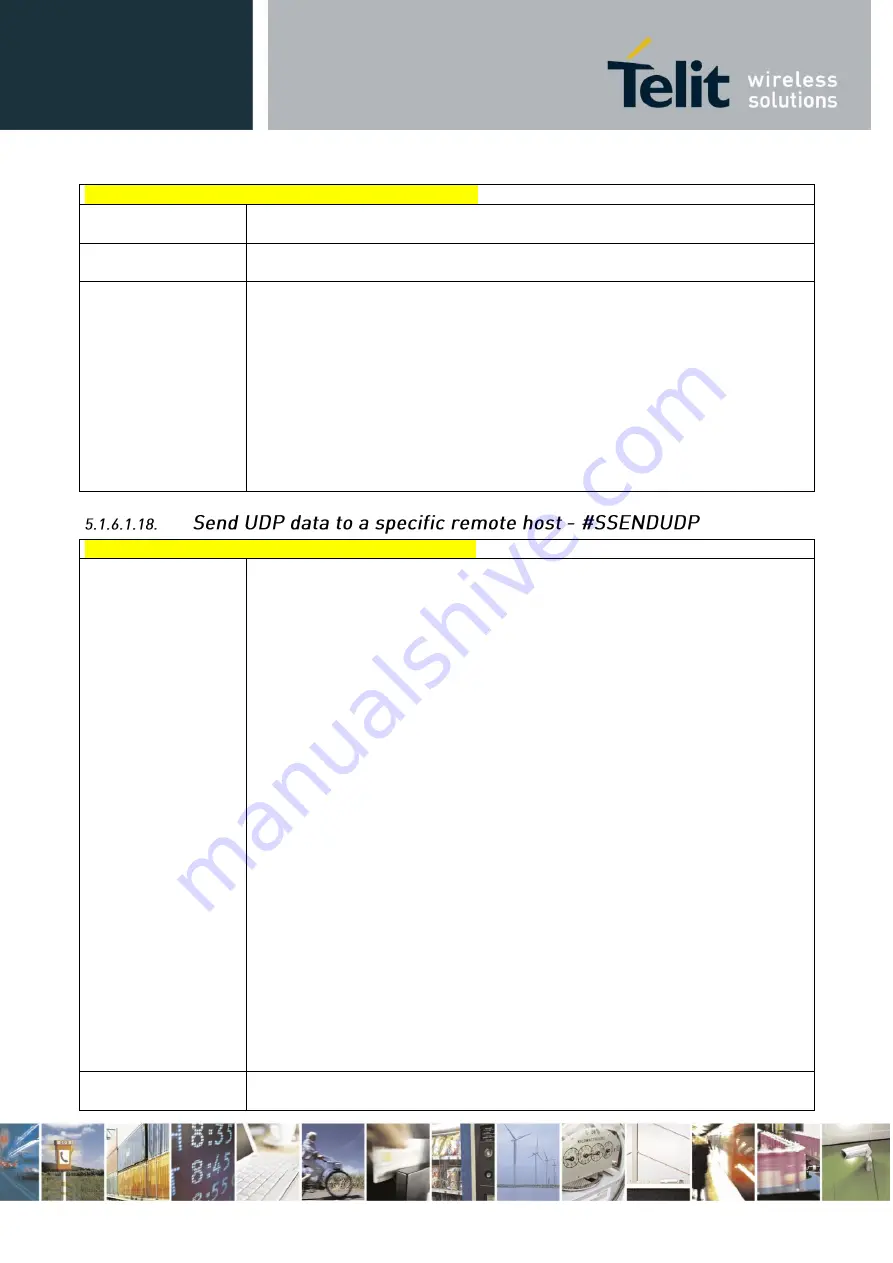
LE910-SKG AT commands reference guide
80437ST10619A Rev.1 – 2014-09-16
Reproduction forbidden without Telit Communications S.p.A. written authorization - All Rights Reserved
page 195 of 273
#SSENDEXT – Send Data in Command Mode extended
BS, i.e. previous character is not deleted)
AT#SSENDEXT=?
Test command returns the range of supported values for parameters
<connId>
and
<bytestosend>
Example
Open the socket in command mode:
AT#SD=1,0,<port>,”IP address”,0,0,1
OK
Give the command specifiying total number of bytes as second parameter:
AT#SSENDEXT=1,256
> …………………….; // Terminal echo of bytes sent is displayed here
OK
All possible bytes(from 0x00 to 0xFF) are sent on the socket as generic bytes.
#SSENDUDP – send UDP data to a specific remote host
AT#SSENDUDP=<co
nnId>,<remoteIP>,<r
emotePort>
This command permits, while the module is in command mode, to send data over
UDP to a specific remote host.
UDP connection has to be previously completed with a first remote host through
#SLUDP
/
#SA
.
Then, if we receive data from this or another host, we are able to send data to it.
Like command
#SSEND
, the device responds with ‘> ‘ and waits for the data to
send.
Parameters:
<connId>
- socket connection identifier
1..6
<remoteIP>
- IP address of the remote host in dotted decimal notation, string type:
“xxx.xxx.xxx.xxx”
<remotePort>
- remote host port
1..65535
Note: after SRING that indicates incoming UDP data and issuing
#SRECV
to
receive data itself, through
#SS
is possible to check last remote host (IP/Port).
Note: if successive resume of the socket to online mode
Is performed(
#SO
), connection with first remote host
is restored as it was before.
AT#SSENDUDP=?
Test command reports the supported range of values for parameters
<connId>
,
<remoteIP>
and
<remotePort>
Содержание LE910-SKG
Страница 1: ......
















































